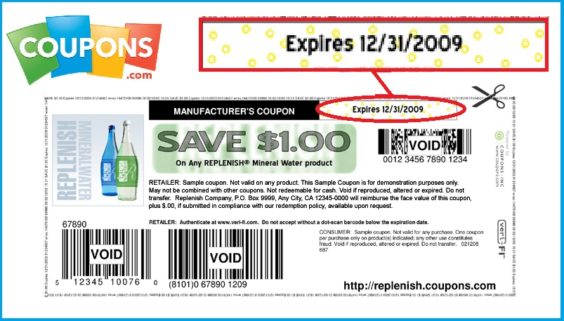Here’s a fun little activity you can try in your own home, and all you need is a $20 bill and a Coupons.com printable coupon. First, take a close look at the back of the twenty. See the tiny yellow “20”s printed all over the background? Now take a close look at the expiration date on the coupon. See how the white background is filled with tiny yellow circles, very similar to those “20”s?
Well, those tiny yellow circles almost cost Coupons.com a quarter billion dollars.
Instead, Coupons.com has prevailed in a three-year legal battle over a printable coupon security feature that, curiously, both parties dismissed as kind of “lame”. And yet the plaintiff wanted the coupon provider to cough up $240 million for it – a penalty that could have sent the company into a tailspin.
Now that would have been lame.
On Monday, a federal judge in New York granted summary judgment to Coupons.com in the suit filed by Document Security Systems, essentially deciding the case without it ever having to go to trial. DSS failed to adequately make its case, the judge ruled, and didn’t show that it was entitled to anything, much less the $240 million it had sought.
And the dispute all boiled down to those little yellow dots.
The case dates back to 2003, when DSS and Coupons.com first did business together. Have you ever had a Coupons.com coupon mailed to you? Well, DSS provided the secure, photocopy- and counterfeit-resistant “safety paper” that Coupons.com used to print those coupons.
DSS also wanted Coupons.com to buy a different form of “proprietary, secret” anti-counterfeiting technology it was offering. “Block-Out” imprints those yellow dots on coupons and other documents, to prevent them from being photocopied. High-end color copiers contain a chip that recognizes the dots’ pattern, and distorts the resulting copy so it’s not usable.
Coupons.com was provided with everything it would need to implement Block-Out on its coupons, but it declined the sales pitch. And lo and behold, just a few months later, DSS said Coupons.com began using its very own yellow dots in a way that seemed remarkably similar to DSS’s method. “Coupons’ unauthorized use of the Blockout File Technology has been intentional, willful, malicious, and in bad faith,” DSS argued in the lawsuit it ultimately filed in October 2011, accusing Coupons.com of misappropriating trade secrets and breaching confidentiality agreements.
But Coupons.com argued, and the judge agreed, that there’s nothing particularly unique about “Block-Out” at all. Coupons.com says Block-Out uses the same method and pattern of tiny yellow characters as you saw on that $20 bill, and that other countries use on their own currency, to prevent counterfeiters from using high-quality printers to make their own money. So there’s nothing “proprietary” or “secret” about it, they contended.
Even if it truly was proprietary technology, the judge ruled, Block-Out isn’t worth anywhere near $240 million to DSS. In an unusual display of unity, the defendant, plaintiff and judge all agreed that Block-Out isn’t even all that effective, since relatively few copiers even recognize those yellow dots. “Many copiers,” the judge’s decision read, “and most if not all home printers and scanners, do not contain such a mechanism” to distort images containing a Block-Out-type pattern. Nor does the pattern “prevent the copying of black-and-white documents, and almost all, if not all, retailers accept black-and-white printed coupons.”
In a deposition, DSS CEO Patrick White admitted that “Block-Out alone is somewhat lame since it only prevents color copies,” and that its main benefit was providing “sizzle” during sales presentations, impressing potential clients. In reality, Block-Out is meant to be bundled with other security features and not serve as a standalone counterfeiting deterrent.
Coupons.com was similarly unimpressed, noting that its “competitors in the coupon industry do not even bother using such technology.” While it continues to use the feature as one of many counterfeiting deterrents, the company argued that the yellow dots alone would only serve to discourage “an uninformed, irresolute, and languid counterfeiter.”
“We’re happy with the judge’s ruling, which we always expected,” Coupons.com CEO Steven Boal said in a statement reacting to the decision. “This validates what we have maintained all along – that the case was and is completely without merit. We’re happy to put it behind us.” Document Security Systems representatives did not respond to a request for comment.
As for that fun little activity involving finding the little yellow “20”s and circles on your money and coupons, that’s as far as the activity goes. If you want to see for yourself whether the yellow characters prevent you from photocopying your coupons and your money – you’re on your own. Remember that printable coupons contain many other security features, so even if you have a low-end copier that can’t “see” the yellow dots, the coupon police can still “see” if you used a photocopied coupon. And if you start photocopying $20 bills, well, it won’t be just the coupon police who are after you.














